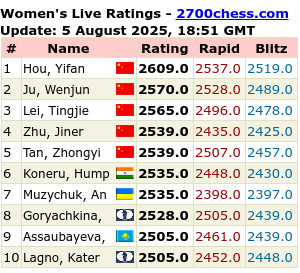A Scotch game : Four Knights variation, I'm White.
I won.
Why ?
1) My opponent made at least 3 consecutive, weak moves with his bishops early in the game, losing time and giving up his dark-squared bishop anyway.
2) After his bishop was lost most of his immediate threats were gone
3) f4 is a great move to make at any stage of the game
4) I did some lucky preparation on the exact variation before the match
5) I had some good ideas from Nigel Davies and Tony Miles.
6) I'm a Grand Master in disguise.
Well, not all of those are true :)
Here's the game...
To deal with my stolen good ideas first....
One of the options in the Scotch is Bc5, instead of Bb4.
Bb4 pins the c3-Knight and is quite useful. Bc5 attacks the knight and aims at f2 : pretty good too. Its a choice Black makes.
My good idea ? Prompted by the Davies DVD, and Tony Miles wonderful game ( "a model way for white to play this variation") it was clear that in the Bc5 variation, the main point is the pressure that the Bishop has on f2, along with the possibilities of Ng4 adding to it. In other words, the dark-squared Black bishop is a nasty threat !
So the main plan/idea is simple : remove the dark-squared bishop, preferably keeping both of my own at the same time, and remember the idea of Na4 !
The move 8...Rb8 was unusual ( I think 0-0 would have been better , although Rb8 does hold the bishop to c1 ) but Bg4 is just strange, and Bb4 is just not good since there is an obvious tempo-gaining riposte in c3. It was these few early mistaken moves that laid the foundation for a good middlegame for me.
White is already good here ( or so I felt ). Just about to remove the dark-squared bishop and end up with a nice centre-pawn.
 |
| 11...Ba5 |
 | |
| 14.f4 ! |
 |
| Simple threats, radiating from centre occupation |
The next few moves are natural as white is just playing on the mate threats versus h7 and then g6, and with the Bishop capture on e6, I'm up a piece.
 | |
| Aiming at the King, gives results: goodbye, bishop ! |
 |
| 28. Qb3+ |
The final position. Black resigns as his queen is lost after Be5 and a nice discovered check.
A good game overall. Not necessarily won by great moves, but rather by capitalising on the weaker moves from Black, particularly in the opening.
I was definitely aided by a pre-match cram of Scotch games with Bc5, so a tip of my hat both to Davies Scotch game DVD and to the checking what my opponent played. Time spent in preparation is never wasted!
See also the inspirational Tony Miles-Ariel Sorin Game ( Capablanca Memorial, 1995) as well. Enjoy his Bf4 and e5!! Well worth the exclamations .


4 comments:
Ah, the Scotch 4 knights, quite an interesting opening. Well played! Your opponent lost a lot of time with his bishops. Instead of castling he moves his dark bishop 3 times and then it gets exchanged...
I liked 16. Bd4 very much, smart move. After that it was almost over. You had the bishop pair, more space, your pieces were more active - a well deserved win.
Yes, far too many moves of the same piece in the opening....as for Bd4, I wasn't sure, as the immediate fxe also is good, but is possibly too subtle. Always nice to pin opposite a king !
I see this game was played in the U1600 division but whites play was much better then that. So i wonder what your real strenght is. Offcourse you just studying this opening might have had an influence on how you played in that game but doesn't explain everything in my eyes.
Welcome, Chesstiger. Yes,it's TL U1600, but that doesn't really mean that much ! TL is a subset of ICC ratings in an attempt, I think, to ensure that the highly variable ICC ratings are flattened out a bit. Even so, you will see very low and high "live-rated" players playing in it (for example, there is a 2000+ rated player in the U1600s at the moment). Explaining everything ? I'm certain the review of the variation just before helped with ideas, but a major part of any explanation for me, is probably the time factor as seen in the time remaining to each of us at the end of this game. I had 6 minutes, and my opponent 41. Maybe an interesting opportunity for a future post: time spent vs move quality ?! For an example of two evenly-matched TL 1600 players I will post my latest T9030 match soon. As for "real" strength, the only way to measure that is a standard rating, so I will need to play in some OTB tournaments, instead of just friendly games. Its been on my "to do" list for a while, so perhaps this winter is an ideal time ! I'm sure in real terms I will end up distinctly U1600 !
Post a Comment